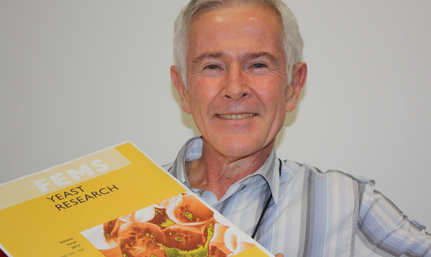Latest News Archive
Please select Category, Year, and then Month to display items
04 April 2024
|
Story Lunga Luthuli
|
Photo SUPPLIED
 Dr Juliet Kamwendo champions gender-inclusive climate action in Africa. Her expertise at the recently held AFR100 workshop highlighted vital steps towards sustainable and equitable development.
Dr Juliet Kamwendo champions gender-inclusive climate action in Africa. Her expertise at the recently held AFR100 workshop highlighted vital steps towards sustainable and equitable development.
Dr Juliet Kamwendo, Lecturer and Programme Director for Gender Studies in the Centre for Gender and Africa Studies at the University of the Free State, is spearheading efforts to integrate gender considerations into Africa's climate restoration agenda. Reflecting on her involvement, Dr Kamwendo stated, "This is particularly crucial, as women make up almost 50% of the population in Africa, and the depletion and degradation of land affect them disproportionately."
She recently served as a gender expert at the AUDA-NEPAD AFR100 workshop in Ouagadougou, Burkina Faso, from 25 to 29 March 2024. This initiative aims to restore forests and degraded land across Africa by 2030, with a focus on gender equality.
The workshop emphasised the integration of gender perspectives into the AFR100 project, acknowledging the disproportionate impact of land degradation on women. Dr Kamwendo's expertise highlighted the need to empower women in climate change interventions, addressing existing gender inequalities exacerbated by environmental degradation.
“Women – who are primarily responsible for household food security and water provision – bear the brunt of environmental degradation, leading to increased workloads, reduced income opportunities, and heightened vulnerability to climate-related disasters. Furthermore, the loss of forest cover and biodiversity further exacerbates the challenges faced by women, particularly in rural areas where they depend heavily on natural resources for their livelihoods,” added Dr Kamwendo.
Her participation highlights academia's crucial role in fostering inclusive and sustainable development, emphasising interdisciplinary collaboration to tackle complex environmental challenges. Through initiatives such as AFR100, stakeholders are working towards a more resilient and gender-responsive future for Africa.
Link between champagne bubbles and the UFS?
2012-11-16
 |
|
Prof. Lodewyk Kock with an example of a front page of the publication FEMS Yeast Research, as adapted by F. Belliard, FEMS Central Office.
Photo: Leatitia Pienaar
15 November 2012
|
What is the link between the bubbles in champagne and breakthrough research being done at the Mayo Clinic in America? Nano research being done at our university.
Prof. Lodewyk Kock of Biotechnology says a human being consists of millions of minute cells that are invisible to the eye. The nano technology team at the UFS have developed a technique that allows researchers to look into such a cell, as well as other microorganisms. In this way, they can get an idea of what the cell’s “insides” look like.
The UFS team – consisting of Profs. Kock, Hendrik Swart (Physics), Pieter van Wyk (Centre for Microscopy), as well as Dr Chantel Swart (Biotechnology), Dr Carlien Pohl (Biotechnology) and Liza Coetsee (Physics) – were amazed to see that the inside of cells consist of a maze of small tunnels or blisters. Each tunnel is about 100 and more nanometres in diameter – about one ten thousandth of a millimetre – that weaves through the cells in a maze.
It was also found that these tunnels are the “lungs” of the cells. Academics doing research on yeast have had to sit up and take notice of the research being done at the UFS – to the extent that these “lungs” will appear on the front page of the highly acclaimed FEMS Yeast Research for all of 2013.
The Mayo Clinic, in particular, now wants to work with the UFS to study cancer cells in more detail in order to fight this disease, says Prof. Kock. The National Cancer Institute of America has also shown interest. This new nano technology for biology can assist in the study and development of nano medicine that can be used in the treatment of cancer and other life threatening diseases. Nano medicine uses nano metal participles that are up to one billionth of a metre in size.
Prof. Kock says laboratory tests indicate that nano medicine can improve the efficacy of anti-cancer medicine, which makes the treatment less toxic. “According to the Mayo Clinic team, nano particles are considered as a gold cartridge which is being fired directly at a cancer tumour. This is compared to fine shot that spreads through the body and also attacks healthy cells.”
“This accuracy implies that the chemotherapy dose can be lowered with fewer side effects. The Mayo Clinic found that one-tenth of the normal dosage is more effective against pancreas cancer in this way than the full dosage with a linkage to nano particles. According to the clinic, this nano medicine could also delay the spread of cancer,” says Prof. Kock.
The nano particles are used as messengers that convey anti-cancer treatment to cancer cells, where it then selectively kills the cancer cells. The transport and transfer of these medicines with regard to gold nano particles can be traced with the UFS’s nano technology to collect more information, especially where it works on the cell.
“With the new nano technology of the UFS, it is possible to do nano surgery on the cells by slicing the cells in nanometre thin slices while the working of the nano medicine is studied. In this way, it can be established if the nano medicine penetrates the cells or if it is only associated with the tiny tunnels,” says Prof. Kock.
And in champagne the small “lungs” are responsible for the bubbles. The same applies to beer and with this discovery a whole new reach field opens for scientists.